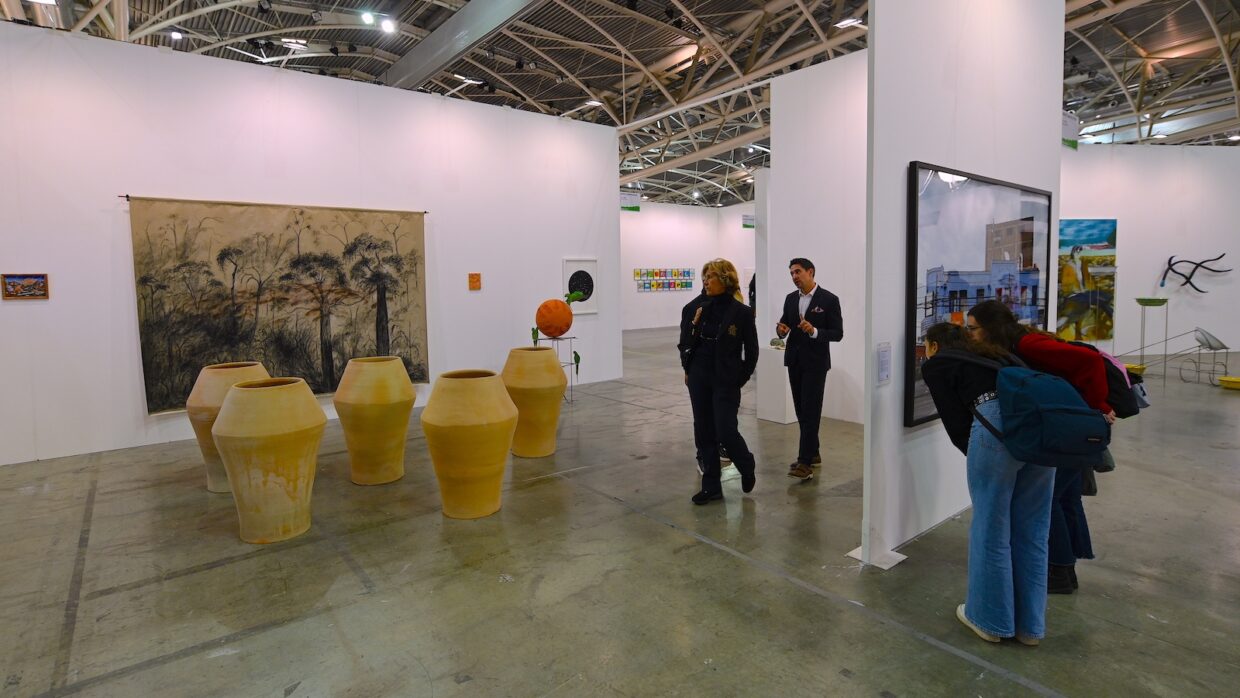|
Getting your Trinity Audio player ready...
|
In 2024, the global art world stands at a crucial juncture, shaped by the momentum of late 2023 and emerging trends informed by increasingly important markets like China. The landscape, shaped by a diverse array of geopolitical and economic factors, continues to evolve, mirroring the broader cultural and societal shifts of our times.
Last year, despite a downturn in total sales by major auction houses like Christie’s and Sotheby’s, the market showed remarkable resilience. The combined decrease in auction and private sales to $14.2 billion, a 13 percent drop from 2022, and a 19 percent reduction in auction sales across top houses, as reported by Art Tactic, suggest a recalibration of the market’s dynamics.
Delving into predictions for 2024, several key trends emerge, highlighted recently by Artnet’s consultation with leading art advisors:
- Focus on Blue-Chip and Underrepresented Artists: Experts like art advisor Thomas Stauffer predict a sustained emphasis on blue-chip contemporary artists, alongside a growing interest in marginalized and indigenous artists. This trend indicates a broader cultural awakening within the art world, reflecting a shift towards inclusivity and diversity.
- Development of a Buyer’s Market: Karen Boyer points to the emergence of a buyer’s market, characterized by slower sales and prolonged decision-making periods at art fairs. This shift from the previously rapid sales tactics signals a market becoming more considerate and discerning.
- Market Deadlock and Quest for Equilibrium: Observations by Todd Levin and Mary-Kate O’Hare suggest a prevailing deadlock, with sellers holding out for higher prices against conservative buyer offers. This scenario indicates a market in search of a new equilibrium, potentially leading to more rational pricing and valuation practices.
- Optimism Amidst Global Economic Challenges: Despite prevailing challenges, experts like Nazy Nazhand anticipate a robust art market in spring 2024, propelled by the rise of prominent women painters. This optimism suggests a market adaptable and capable of finding growth opportunities in uncertain times.
The behavior of High Net Worth (HNW) collectors offers further insights into the market’s trajectory. Art Basel reports that 54% of HNW collectors plan to acquire art in 2024, maintaining stability compared to 2022. Conversely, the decline in the number of collectors planning to sell their works, from 39% in 2022 to 26% in 2024, hints at an expectation of future market growth or a cautious stance in a fluctuating economic landscape.
In the realm of digital art and NFTs, despite significant price and sentiment fluctuations in 2023, these mediums continue to serve as avenues for galleries and auction houses to engage a new demographic of collectors. The integration of technology in art curation and viewing, including virtual galleries and augmented reality experiences, is reshaping art consumption and exhibition, potentially influencing future market trends.
Regionally, the global art market exhibits distinct variations shaped by cultural, economic, and social factors. The Asian art market, particularly in China and Japan, is demonstrating robust growth and an increasing appetite for contemporary art. Meanwhile, the European and North American markets are experiencing a more nuanced evolution, with collectors showing a keen interest in historically significant pieces and emerging artists who challenge traditional boundaries.
As we look to the year ahead, the art market is characterized by a blend of cautious optimism and a quest for new balance. The continued interest in blue-chip and marginalized artists, the emergence of a more discerning buyer’s market, and the impact of technological advancements, all contribute to a dynamic state of evolution in the art world.



